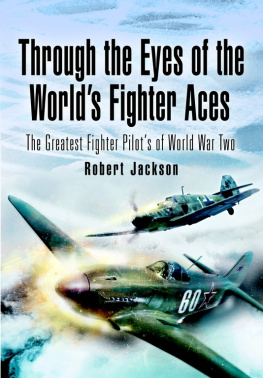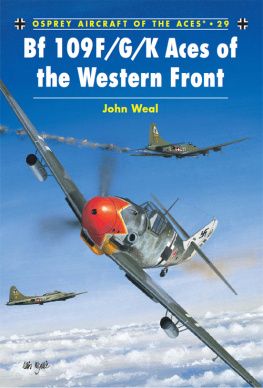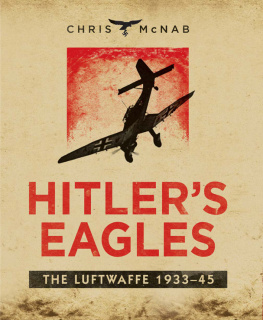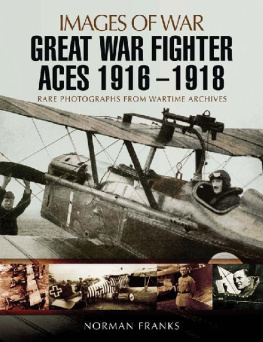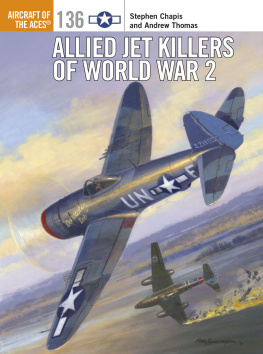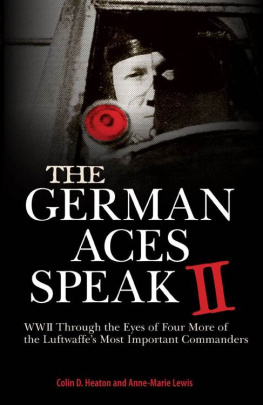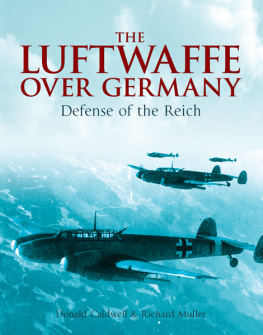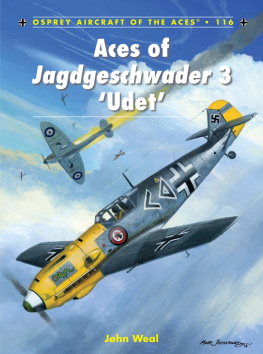The Me 262 Stormbird
From the Pilots Who Flew, Fought,
and Survived It
Colin D. Heaton and Anne-Marie Lewis
Forewords by
Jorg Czypionka and Barrett Tillman

This book is dedicated to all the airmen from all nations who flew in World War II and never came home.
Certain proceeds from the sale of this book will support the Wounded Warrior Project and the Volksbund Deutsche Kriegsgrberfrsorge e.V.
Contents
Tables
Foreword
Jorg Czypionka, 10./NJG-11
T here are only a very few of us left of the generation who actually flew the fighters like the Bf 109, the Fw 190, and especially the Me 262 during the war under combat conditions. Our generation has been dying out progressively and with it the knowledge of how things really wereall those aspects that go beyond the metal bits and pieces that are called airplanes.
Many of these fighters are still in great condition in museums or even flying. And there are many curators, mechanics, and young pilots who know a great deal about the mechanics of how they function. There are many historians who research how they came to be designed and built and have learned some of the intrigues that surround them. Performance data and statistics and stories of their actions in the war can also help future generations understand these great war machines. But much of this is only about metal, armaments, fabric, wood, and paint. It is not about the planes soulswhich are the pilots and their memories.
This book represents an effort to preserve what can still be preserved of the human dimensiona less tangible but equally important element in black and white. A written record can only inadequately reflect the stories those old pilots who are still around will tell over a glass of wine. But this book, which contains many personal stories, will go some way toward preserving their memories, the human feelings and experiences that make our planes that now stand in museums come alive for the generations following ours.
This can obviously only go so far, but the author has tried very hard to blend history and technical aspects with the human element, and I commend him for that.
Barrett Tillman
I was fortunate to get acquainted with some of the Me 262 pilots you will meet in this book. I dealt with Adolf Galland when Champlin Museum Press republished two of his volumes in the 1980s, and through him I met the enormously entertaining Walter Krupinski. Talking to Johannes Steinhoff left me almost awestruck: Behind that ruined face remained an active, penetrating mind who expressed heartfelt emotions in flawless English. Franz Stigler became a flying buddy of sorts, as my father and I sometimes shared ramp space with him at Northwest airshows. Ill always remember how his wife, Haya, swept the hangar floor with any pilot ambitious enough to polka with her.
In reflecting on the conversations with those Luftwaffe veterans, I was reminded of Brian Keiths line in the John Milius film The Wind and the Lion. As Teddy Roosevelt, he tells his daughter, Sometimes your enemies are a lot more admirable than your friends.
Heres why:
Galland, Steinhoff, Lutzow, and others faced a chilling atmosphere in 19441945. Yet they went nose to beak with Gring and Hitler in defense of their aircrews who were excoriated as slackers and cowards while suffering 25 percent personnel losses per month.
Fast-forward to 1991 when the first Bush administration launched the Tailhook witch-hunt against thousands of innocent naval aviators. A handful of verified cases of sexual harassment at a professional symposium ignited a political firestorm that set back naval aviation morale and retention for nearly a decade. That was because most of a generation of admirals and marine generals failed to match the standards of senior German airmen nearly five decades before.
Why the Luftwaffe produced such a depth of leadership is a subject still ripe for examination. But in these pages you will meet professional officers who, while born into a nation eventually ruled by an evil regime, never broke faith with their comrades. Having gotten to know a few of them, I believe that the reason was twofold: Long-suffering subordinates expected it of their leaders, and the leaders expected it of themselves. Protecting their retirement benefits did not enter their minds.
Putting a new technology into service is difficult enough, let alone at the height of a global war. The industry and determination of Jagdwaffe personnel in delivering Turbo to combat sets another yardstick. To place that accomplishment in context, Germany and Britain had simultaneously developed jet engines in 1937 and the Luftwaffe flew a test aircraft in 1939. The Me 262 reached operational status five years later. In comparison, todays sophisticated military aircraft can spend fifteen years or more from inception to squadron deliveryand sometimes they trap pilots in their cockpits, lose navigation systems upon crossing the international date line, and unexpectedly run out of oxygen. One theory holds that the reason is not so much technical as motivational: Todays stealth aircraft have no genuine war to fight, with none on the horizon.
Whatever the relative technical advances and glitches between the 262 and todays crop, the most obvious distinction is combat use. Large-scale aerial combat has been extinct on planet Earth since 1982, but the Sturmvogel was hatched in war and faced an immediate, pressing need. As Colin Heaton describes in this volume, the political machinations that delayed the 262s introduction as an air-superiority fighter were immensely frustrating to the Jagdwaffe. Since 1945, the question has often been asked whether an earlier commitment to jets could have benefited Nazi Germany. At most, it might have delayed the inevitable, but a prolonged air war would have meant greater casualties on the ground. Therefore, everyone can be thankful for Hitler and Grings mismanagement.
Strategic bombing took over three years to achieve the strength and consistency required to affect the wars outcome. But from early 1944 onward, U.S. and RAF bombers crippled enemy oil production and transport, leading to a descending spiral from which Germany could not recover. But its intriguing to postulate an alternate scenario: What if the Reichs diminishing petroleum production had concentrated on the simpler task of refining kerosene rather than the labor-intensive high-octane fuel for piston aircraft? Combined with greater emphasis on building jets, the air war might have taken a significant change of direction. That presumes, of course, that German industry could have produced enough aircraft and engines, especially since the 262s Jumo engines typically lasted eight to twelve hours.
The other part of the 262 story, of course, is the Allied perspective. The author not only presents detailed tables for reference, but allows U.S. and British airmen to speak for themselves. How they coped with the sudden appearance of enemy aircraft that outstripped their fighters by 100 miles per hour is well worth studying.
Fighter pilots being what they are (lets face it: theyre supreme egotists), its instructive to note the prestige attached to downing a jet. Then Lt. Col. Gabby Gabreski, the leading American ace in Europe, is quoted as saying he would have traded half his total victories for one confirmed jet kill.
Those of us privileged to have known the greatest generation of aviators recognize that the biggest difference among combat airmen is the paint on their airframes. The World War II generation not only fought a unique war but flew a fabulous variety of aircraft that can never be matched. Consider this: The men who learned to fly in biplanes during the early 1940s finished their careers in jets capable of Mach 2. That kind of progress can never occur again. Meanwhile, the ghastly prices for twenty-first-century aircraft ensure that there will never be another air war on the scale of Korea, let alone World War II.
Next page


